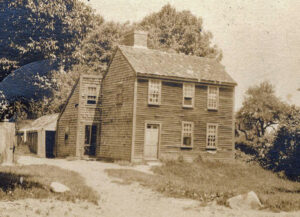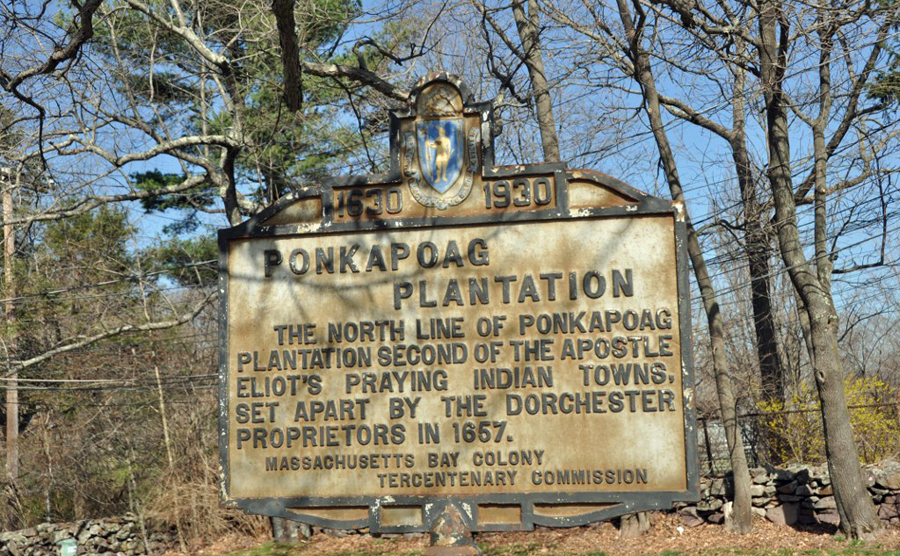True Tales from Canton’s Past: It Takes a Village
By George T. ComeauThe following story originally appeared in the December 30 issue of the Citizen.
One of the most wonderful things about Canton’s history is that we are a town of villages. We may not realize this today, but old-timers will know exactly what this is about. Almost 20 square miles, the community developed slowly over the last three centuries, and it was our villages that would become the Canton we know today.
Over time we have lost some of that “village” quality. But upon closer inspection, and with a sense of the development of the town, the boundaries become clear. In olden days, it was easy to tell someone that you lived at the “Farms,” now the area from Randolph to York streets. If you stated that you lived in the “Hardware,” it meant that part of town where the Kinsley Iron Works dumped the slag and metal remnants from the blast furnace. Extending from Washington Street at High Street to the Sharon-Stoughton line, the Hardware encompasses the side streets of Pierce Place, Drake Lane, Shepard Street, Pond Street, Kinsley Place and the west end of Dunbar Street.
And Canton Corner, also called the Dark Corner, was that land between Chapman Street along Washington to Randolph Street. This was the second center of town before the development moved south to present-day Canton Center.
But perhaps the village that has retained and resonates the historic qualities of our rich history best is Ponkapoag. Indeed, this is our oldest and most important part of what is now Canton. It has been spelled many different ways: Punkapaug, Punkapoag, or Punkapog. It was the second Native American “Praying Town” established in eastern Massachusetts during the colonization of the Atlantic seaboard by settlers from Britain in the 17th century.
We did not name this place. The native Massachusett tribe, who in the summer lived at the mouth of the Neponset River near Dorchester, in what was known as Neponset Mill, would “winter” inland at this place. And when these natives were forced into the so-called Praying Town, they took on the name of the place and became known as the Ponkapoag Indians. The place name is derived from the native tongue and is said to mean “shallow pond” or “a spring that bubbles from red soil.” The reference is to Ponkapoag Pond near Great Blue Hill.
In 1657 this was part of the 6,000 acres of land parceled out by the Massachusetts Bay Company and for a short time reserved for the use of the native population. And, like many treaties with the indigenous people, the promises were broken over time. Settlers came to this area and illegally squatted on the land. The Great and General Court gave lip service to the agreements with the native leaders and soon the Praying Indian village became a village of the European colonists.
This was the place that John Eliot came to preach to the natives, the so called “children of the forest.” On the shores of Ponkapoag Pond he read from his bible that was translated into their tongue. On the hill overlooking the plain that leads to Great Blue Hill, at the intersection of Randolph Street, is a stone watering trough that was erected by the Historical Society in the 1880s to commemorate Eliot. The police station is located in the former Eliot School. There is even an Eliot Street. We have lionized John Eliot, and yet have little to commemorate the native population who were nearly eradicated by the policies of this very same community. In fact, the one sign that marked the northern boundary of the plantation was stolen several years ago and has never been replaced.
As our dark contact period passes, the bright celebration of the establishment of the United States owes gratitude to Ponkapoag. At the foot of the Great Blue Hill stood Colonel Doty’s Tavern. It was here that the “committee of safety” met several times immediately preceding the outbreak of hostilities with the mother country. Here the patriots were fired up by the kindling words of Adams and Hancock and Otis, and here public documents were drawn up protesting the tyranny of Great Britain. In 1774, it was the meeting place for the first Suffolk County Congress, whose resolves anticipated the famous Suffolk Resolves, drafted by Dr. Joseph Warren. The tavern in Ponkapoag was selected by Samuel Adams for its inland (but central) location. The tavern was destroyed by fire on December 19, 1888. There is no historic marker for this location.

The Seth Strowbridge House once sat where Greenlodge Street meets Route 138. (Courtesy of the Canton Historical Society)
This was also home to many of our patriot soldiers, including Seth Strowbridge, who served as a private in the Stoughton Minutemen and served in the Revolutionary War after Lexington. Strowbridge signed the petition that created Canton in 1795. The Strowbridge House was a major historic site and today lives on only through photographs.
Along Green Street is a collection of estate homes. One home, high on a hill, is the residence of Governor Weld. Wealthy people have always lived here. Historically this entire area was the elegant estate of Augustus Hemenway. Described as a “baronial establishment,” many of the original buildings are still standing and have fabulous architectural significances. As detailed by a writer in 1887, “All the grounds, taken together, form a veritable park. There is everything that goes to make a fine place. In the paddocks are from 20 to 30 blooded horses, runners, hunters, carriage and road horses. The house is filled with choice art treasures and beautiful bric-a-brack, the grounds are well laid out, and, above all, it is in a most charming country, with old Blue Hill towering above it and the Neponset winding through the green expanse of meadow.”
Nearer to the intersection of Washington Street is the new development at Connor’s Wayside Furniture. It was here that the original general store once stood and vestiges remain. This establishment supplied “groceries, dry goods, provisions and articles of all sorts, including ready-made clothing for men and boys.” This place also served as post office, as well as a gathering place where a “motley gathering of men and boys” would sit around the big stove and discuss with “great gusto all the affairs of their little world, including Aunt Miranda’s new pig pen and Joe Smith’s fast bay mare just purchased.” In essence, it was the center of the village.
The famous also lived here. Dr. Samuel Cabot, one of the country’s most prominent surgeons, lived in a house still standing. Cabot purchased the Cherry Hill Tavern as his summer residence, and the building, while moved from its original spot, is still preserved today. Cabot was one of the most prominent Boston physicians of his day, treating Kit Carson, Grizzly Bear Allen, and Buffalo Bill. Further down the road lived Henry L. Pierce, the mayor of Boston. With more than 200 acres of land, the Redman Farm was renowned for so many reasons and is where Pierce kept his “famous herd of jerseys, one of the finest in the country, valued between $30,000 and $40,000,” with one cow costing $6,200 and several others worth $3,000 or $4,000. Running directly through the center of the estate was a “beautiful avenue,” about half a mile long and lined with shade trees, connecting the house with the “beautiful sheet of water” known as Ponkapoag Pond.
There is so much to share about Ponkapoag and our history. Here is where our first stockades were mounted; where the largest bass in the commonwealth was once caught; where Mark Twain visited his dear friend Thomas Bailey Aldrich; and where arguably the most important meteorological record has been kept. One day, the story may emerge that proves the genesis of flight happened here. Ponkapoag was also once on the short list for the location of the United Nations. It was here that Lafayette slept, and where a child’s murder darkened and terrified the local inhabitants. This was where slaves were hidden in defiance of laws against slavery. Ponkapoag is where one of the most devastating fires took the lives of several children. And, as pointed out, where liberty breathed her first breath. In short, this village deserves recognition and reflection for the unique identity of this place, Canton’s first village.
Short URL: https://www.thecantoncitizen.com/?p=80477











